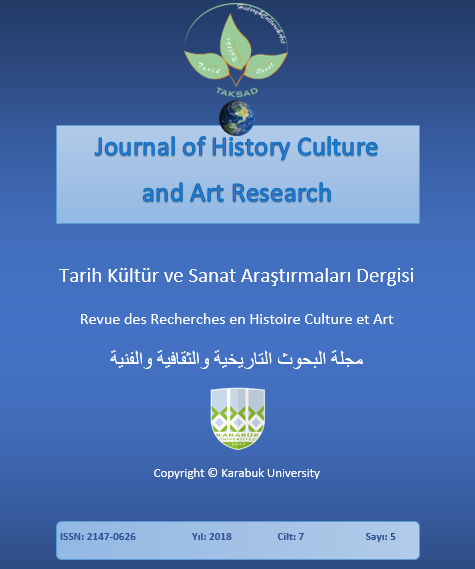Ottoman Mosque in the Balkans as the Legacy for the Contemporary Expression
DOI:
https://doi.org/10.7596/taksad.v7i5.1768Keywords:
Ottoman architecture, Balkans, the contemporary mosque, Bosnia and Herzegovina.Abstract
The paper explains main characteristics of existing Ottoman monuments in several Balkan countries. Ottoman architectural activity in the Balkan provinces largely reflected architectural styles founded in the principal centers of the Ottoman Empire. A few buildings were designed by the principal architects of the Empire. Traces of local diversity can be found in the designs together with certain variations in building typology, which reflect prevailing social and environmental conditions as well as local traditions, building technique and materials. Among the remaining monuments of urban environments, besides bridges, hans, hammams, and other building types, mosques largely witness a long and rich architectural Ottoman past. Concerning the typology of a mosque, mostly a single–domed type with a three–bay portico and slender minaret was the common model throughout the Balkans from the 16th to 18th century. Today this model still remains in the eyes of many Muslim communities and individuals the ideal model of an Islamic place of worship. The twentieth century, however, has revealed a divergence in approach to the mosque design. While numerous mosques in some Balkan countries are designed on the populist vision of the Ottoman model, a growing number of architects seek to develop a contemporary idiom in mosque design as an appropriate expression of Muslim societies.
References
Bećirbegović, M. (1990). Džamije sa drvenom munarom u Bosni i Hercegovini, Veselin Masleša, Sarajevo.
Bejtić, A. (1953). Banja Luka pod turskom vladavinom, arhitektura i teritorijalni razvitak grada u XVI I XVII vijeku. Naše starine I, 91-115. Retrieved from: https://www.fmks.gov.ba/download/zzs/1953/3-1953.pdf (Sep. 17, 2018).
Bejtić, A. (1953). Spomenici osmanlijske arhitekture u Bosni i Hercegovini, Prilozi za orijentalnu filologiju, III-IV, Orijentalni institut u Sarajevu.
Batuman, B. (2016). Architectural mimicry and the politics of mosque building: negotiating Islam and Nation in Turkey. The Journal of Architecture, 21:3, 321-347. http://dx.doi.org/10.1080/13602365.2016.1179660 (19. Sep. 2018).
Čelebi, E. (1996). Putopis – odlomci o jugoslovenskim zemljama. Sarajevo: Sarajevo–Publishing.
Erzen, J. N. (2011). Reading Mosques: Meaning and Architecture in Islam. The Journal of Aesthetics and Art Criticism Vol. 69, No. 1, Special issue: The Aesthetics of Architecture: Philosophical Investigations into the Art of Building (Winter 2011), 125-131. Retrieved from: https://www.jstor.org/stable/42635843 (Jan. 12, 2018).
Fatouh, A. M. M. A. (2010). Byzantine influence on early Ottoman architecture in Greece (Doctoral Dissertation). Retrieved from http://phdtheses.ekt.gr/ (Dec. 30, 2012).
Goodwin, G. (1971). A History of Ottoman Architecture. London: Thames & Hudson.
Gruber, S. D. (2010). “Selected Muslim Historic Monuments and Sites in Bulgaria.” United States Commission for the Preservation of America's Heritage Abroad. http://heritageabroad.gov/~FINAL_Web%203.11.10.pdf (Jan. 8, 2013).
Harthmut, M. (ed.) (2010). Centres and Peripheries in Ottoman Architecture: Rediscovering Balkan heritage. Cultural Heritage without borders – Regional office Sarajevo.
Jahić, E. (2013). Ottoman architectural heritage in the Balkans. In M. Mulalić, H. Korkut & E. Nuroğlu (Eds.), Turkish-Balkans Relations (83-100). Istanbul: Tasam.
Jahić, E. (2008). Stylistic Expressions in the XX Century Mosque Architecture. Prostor, 16, 2–21.
Kemura, Š. S. (1911). Sarajevske džamije i druge javne zgrade turske dobe. Glasnik Zemaljskog muzeja u Bosni i Hercegovini XXIII, 175-208.
Kiel, M. (2005). “Un héritage non désiré: le patrimoine architectural islamique ottoman dans l’Europe du Sud–Est, 1370–1912”, Études balkaniques [En ligne], 12 | 2005, mis en ligne le 06 avril 2009, Consulté le 04 février 2013. Retrieved from http://etudesbalkaniques.revues.org/index123 (Jan. 14, 2013).
Lewis, S. (1999). The Ottoman Architectural Patrimony of Bulgaria. Proceedings of the 11th International Congress of Turkish Art, Utrecht – The Netherlands, August 23–28, No. 30, 1–25. Retrieved from: http://balkanpazar.org/30Lewis.pdf (Dec. 28, 2012).
Madryga, D. (2017). Restoring and Reinventing Albanian Identity: A New Mosque and Museum of Tirana & Religious Harmony. Retrieved from: https://competitions.org/2017/07/restoring-and-reinventing-albanian-identity-a-new-mosque-and-museum-of-tirana-religious-harmony2/ (Aug. 17, 2018)
Mujezinović, M. & Dimitrijevic, E. (1954). Džamija na Ustikolini. Naše starine II, 137-144. Retrieved from: https://www.fmks.gov.ba/download/zzs/1954/11-1954.pdf (Dec. 14, 2018).
Nametak, A. (1939). Islamski kulturni spomenici Turskog perioda u Bosni i Hercegovini. Državna štamparija u Sarajevu (From Glasnik Ivz. Kraljevine Jugoslavije).
Özaloglu, S. & Gürel, M. Ö. (2011). Designing Mosques for Secular Congregations: Transformations of the Mosque as the Social Space in Turkey. Journal of Architectural and Planning Research, 28:4 (Winter 2011), 336-358. Retrieved from: http://hdl.handle.net/11693/21670 (Mar. 22, 2017).
Pavlov, Z. (2009). Ottoman Monuments. Ministry of Culture of the Republic of Macedonia – Cultural Heritage Protection Office, Skopje. Retrieved from: http://www.academia.edu/1934192/Macedonian_Cultural_Heritage_OTTOMAN_MONUMENTS (Jan. 12, 2013).
Redžic, H. (1965). Restauratorsko-konzervatorski radovi na “Glavici” džamiji u Livnu. Naše starine X, 99-104.
Redzic, H. (1965). Arhitektonska konzervacija Aladža džamije u Foči. Naše starine X, 105-111.
Redžić, H. (1983). Studije o islamskoj arhitektonskoj baštini. Veselin Masleša, Sarajevo.
Ünsal, B. (1973). Turkish Islamic architecture. London: Academy Editions.
Yetkin, S. U. (1959). The Evolution of Architectural Form in Turkish Mosques (1300-1700). Studia Islamica, No. 11 (1959), 73-91.
Downloads
Published
How to Cite
Issue
Section
License
All papers licensed under Creative Commons 4.0 CC-BY.- Share — copy and redistribute the material in any medium or format
- Adapt — remix, transform, and build upon the material for any purpose, even commercially.
Under the following terms:
Attribution — You must give appropriate credit, provide a link to the license, and indicate if changes were made. You may do so in any reasonable manner, but not in any way that suggests the licensor endorses you or your use.
- No additional restrictions — You may not apply legal terms or technological measures that legally restrict others from doing anything the license permits.







